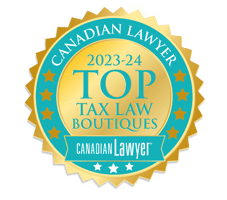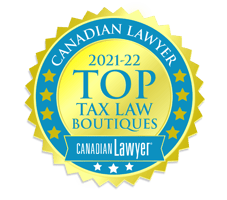
Key Challenge: Clarifying GST/HST Supply Classification
- Integrated Transactions: Tax professionals should proactively evaluate whether elements of a purchase are truly independent or part of a single supply to mitigate unexpected tax exposure.
- Substance Over Form: Merely listing separate charges on an invoice does not automatically establish distinct tax treatment. Courts analyze the economic reality of transactions rather than relying on invoice structures.
- Legislative Intent vs. Common Law: Tax professionals must assess whether statutory provisions provide sufficient clarity to override the A. Brown test when determining tax liabilities. Based on the FCA's guidance, only tax statutes appear to provide the necessary level of clarity for a taxpayer to conclude that a seemingly connected supply consists of distinct, separate supplies.
FCA Decision Summary
This ruling suggests a narrowing of Kevin Davis Dentistry, reinforcing that only tax statutes—not regulatory requirements—can explicitly define separate supplies with distinct tax treatments.
The Federal Court of Appeal (FCA) reaffirmed that the O.A. Brown test governs supply classification unless Parliament explicitly provides otherwise. This ruling introduces a strategic challenge for tax professionals seeking to optimize their clients' tax positions under the Excise Tax Act (ETA). The decision also appears to narrow the application of the FCA’s previous ruling in Kevin Davis Dentistry.
Case Background
Bell Canada, a major telecommunications provider, purchased electricity in Ontario and claimed input tax credits (ITCs) on its expenses. Under subsection 236.01(2) of the ETA, Bell had to repay ITCs on specified property, including electricity. Its invoices itemized:
- Electricity Supply
- Delivery Services
- Regulatory Services
- Debt Retirement Charges
The Canada Revenue Agency (CRA) assessed Bell, recapturing ITCs on all charges, arguing they were part of a single supply of electricity. Bell appealed, contending that the breakdown of charges on invoices, as required by Ontario’s Invoice Regulations, demonstrated legislative intent to treat them as distinct supplies. The Tax Court of Canada (TCC) dismissed the appeal, leading Bell to escalate the case to the FCA.
FCA Ruling: Legislative Clarity is Key
The FCA ruled against Bell, emphasizing that the Invoice Regulations merely required separate line items but did not establish distinct tax treatments. The Court contrasted this with Kevin Davis Dentistry, where the ETA explicitly categorized orthodontic appliances and services as separate supplies with different tax treatments.
Since the statute lacked clear legislative intent regarding taxation, the FCA upheld the O.A. Brown test, which determines whether individual elements of a transaction are integral to the main supply. Applying this test, the FCA concluded that delivery and regulatory services were essential to the electricity supply, making them part of a single taxable supply.
Strategic Considerations for Tax Professionals
This decision presents a challenge for tax professionals navigating GST/HST compliance. If legislation does not expressly distinguish between supplies, businesses cannot assume that separate invoice line items create separate taxable supplies. Tax professionals must ensure their clients rigorously assess whether elements of a transaction are economically independent or merely components of a broader supply.
The ruling reinforces that regulatory classifications alone are insufficient to override the O.A. Brown test. Tax professionals must anticipate tax risks and structure transactions strategically to maintain compliance and minimize liabilities.

.jpg?width=120&name=Counter%20Tax%20Litigators%20Logo%20Stacked%20(MidnightBlue%20on%20White).jpg)













.png?width=400&height=400&name=CT-How_Can_We_Help-22_july_NewGraphic_b(small).png)

.png?width=1386&height=1224&name=2025%20Legal500%20Elite%20Boutique%20Award%20(Badge).png)
.png?width=1386&height=1224&name=ITR%20Finalist%20Practice%20Leader%20of%20Year%20Peter%20Aprile%202024%20(Badge).png)
.png?width=1386&height=1224&name=2025%20Legal500%20Leading%20Firm%20Client%20Satisfaction%20Award%20(Badge).png)





.png?width=1386&height=1224&name=ITR%20Tax%20Innovator%20Finalist%202024%20Award%20(Badge).png)
